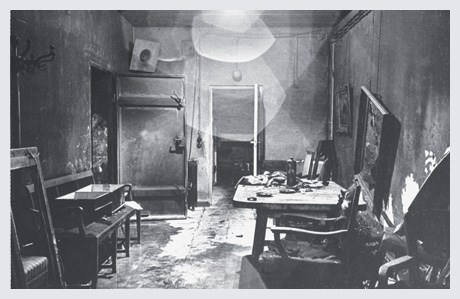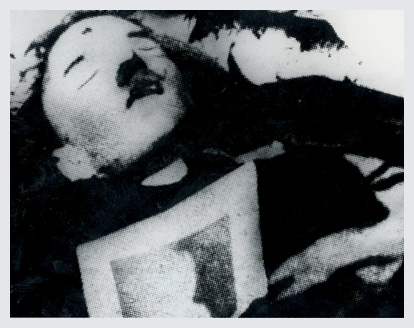
As Allied forces closed in on Berlin, Hitler refused to surrender. Instead, he and his most trusted officers and staff retreated to his bunker—a secret complex of underground rooms beneath the city. His last weeks were spent there and have since become the subject of rumor and mystery.

Adolf Hitler’s bunker conference room can be seen here after it was partly burned out by SS troops and then stripped of evidence by the invading Russian troops.
Rumors spread after the war that Hitler had escaped the bunker and survived. The mystery was fueled by the lack of a body and the secrecy of the Soviet authorities following their capture of East Berlin. However, the accepted view now is that Hitler committed suicide in his bunker.
Major Bernd von Freytag-Loringhoven, a witness to Hitler’s last days, later reported that the Führer had become like a sick, old man. By this time, he had lost all grasp of military reality, issuing orders for counterattacks against Allied forces that had no chance of being carried out. He flew into frequent rages, believing he had been betrayed by his generals and his closest colleagues.
Only at the very end did Hitler realize his fate and accept that the Third Reich, which he once said would last 1,000 years, was doomed. On April 29, he married his longtime companion Eva Braun. The following day, with Soviet forces just 1,600 feet (500 meters) from the bunker entrance, he committed suicide.
According to the accepted version of events, Hitler and his wife swallowed cyanide pills before he shot himself. Their bodies were then taken to a small garden at ground level and set alight. A Russian museum has exhibited a fragment of bone, which they claim is all that remains of Hitler’s skull, but the final resting place of his ashes remains a mystery.

In 1964, this picture was found, apparently taken by a member of Hitler’s staff. It supposedly shows Hitler’s corpse in his underground bunker.